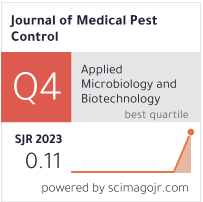Epidemiological features of 92 cases of rabies and analysis of not seeking medical care after exposure
Abstract
Abstract
This study analyzes the epidemiological features of 92 confirmed rabies cases and investigates the factors contributing to the failure to seek medical care following exposure. Data on demographics, exposure circumstances, incubation periods, and healthcare-seeking behaviors were collected through case reviews and interviews. Findings show that the majority of cases involved rural residents, with dog bites as the predominant exposure source. A significant proportion of patients did not seek timely medical care or post-exposure prophylaxis (PEP), which was associated with increased mortality. Reasons for not seeking care included lack of awareness, economic constraints, and limited access to healthcare facilities. The study highlights the critical need for public education, improved access to PEP, and community-based interventions to reduce rabies incidence and fatalities.
Full text:
PDFReferences
Li J., Xie Q., Tang Z., Liu F., Liu W.



